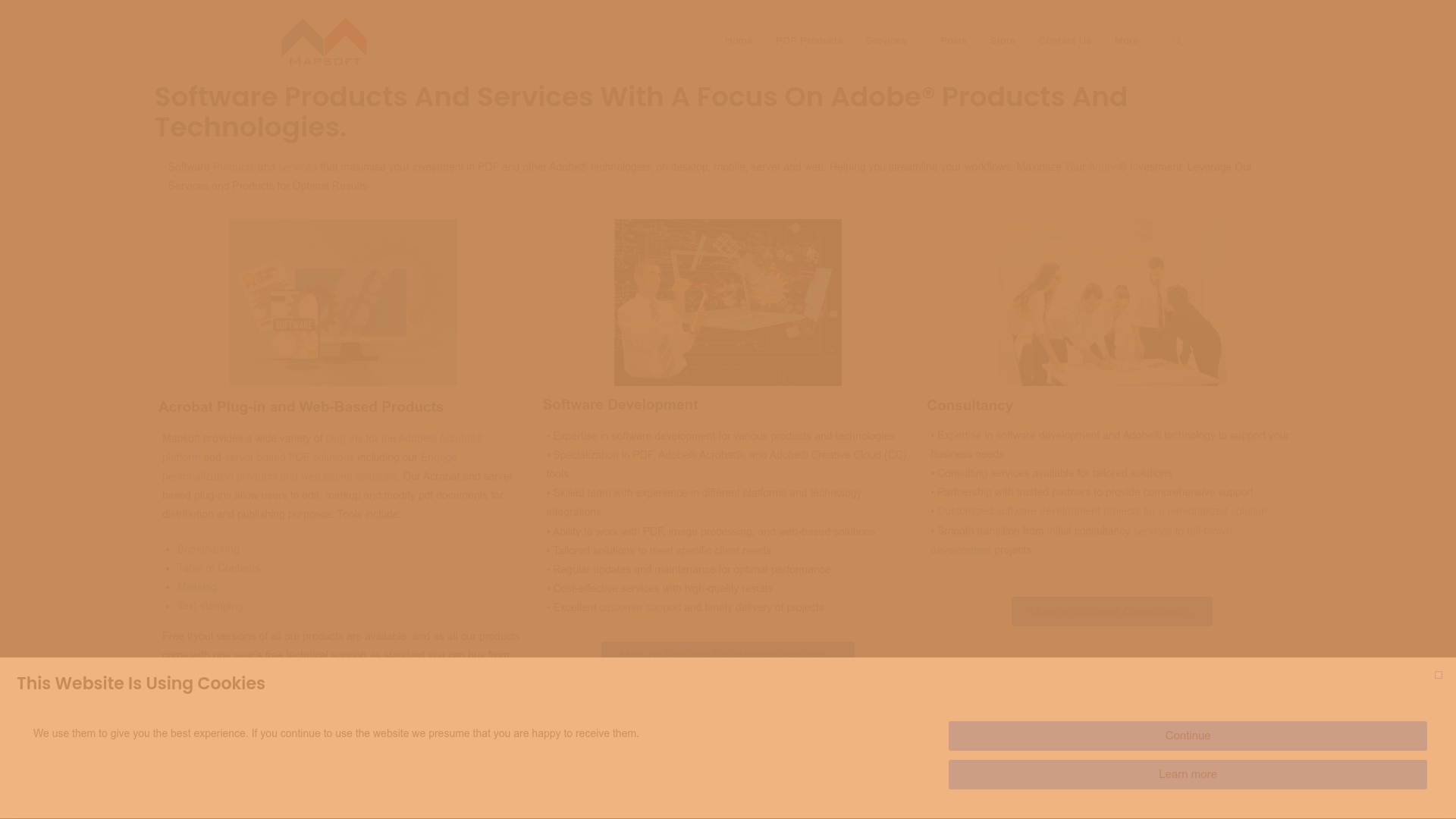Managing remote teams sounds simple with all the digital tools available now and companies are eager to go virtual for the perks. But get this. Teams with strong communication strategies see 35% higher productivity and engagement according to Gartner yet most managers still struggle to keep everyone on the same page. The real secret is not just picking fancy tools, but building new habits and systems that actually make distance work feel seamless.
Table of Contents
- Establish Clear Communication Channels
- Set Mutually Agreed Expectations
- Utilize Project Management Tools
- Foster A Strong Team Culture
- Schedule Regular Check-Ins
- Encourage Feedback And Collaboration
- Support Professional Development
- Recognize And Reward Achievements
Quick Summary
| Takeaway | Explanation |
|---|---|
| Establish clear communication channels | Choose the right platforms for messaging, video conferencing, and project management to ensure seamless remote collaboration. |
| Set mutually agreed expectations | Develop clear agreements regarding performance metrics, availability, and communication standards to enhance team accountability and reduce conflicts. |
| Utilize effective project management tools | Implement user-friendly software that provides task tracking and facilitates collaboration to improve team productivity and project outcomes. |
| Foster a strong team culture | Create virtual social interactions and shared spaces to enhance team cohesion and maintain connections despite geographical distances. |
| Recognize and reward achievements | Acknowledge both individual and team successes to boost morale and reinforce commitment within a remote work environment. |
1: Establish Clear Communication Channels
Managing remote teams requires strategic communication infrastructure that transcends traditional office interactions. The digital workspace demands robust channels that facilitate seamless collaboration, transparency, and team connection.
Successful remote team management hinges on selecting appropriate communication platforms that match your organization’s specific needs. According to Gartner Research, companies that implement comprehensive digital communication strategies experience 35% higher team productivity and engagement.
Key considerations for establishing effective communication include:
- Real-time messaging platforms for instant team interactions
- Video conferencing tools for face-to-face virtual meetings
- Project management software that integrates communication and task tracking
Choosing the right mix of communication tools involves understanding your team’s workflow and preferences. Harvard Business Review suggests creating a communication protocol that defines:
- Which platforms to use for specific types of communication
- Expected response times
- Guidelines for professional digital interaction
Teams should prioritize platforms that offer:
- Secure messaging
- Easy file sharing
- Integration capabilities
- Mobile accessibility
Regular virtual team meetings and check-ins become crucial in maintaining team cohesion. These sessions provide opportunities for social interaction, project updates, and addressing potential communication barriers in remote work environments.
Remote communication is not just about technology but about creating a connected and transparent work culture. By investing time in establishing clear communication channels, organizations can bridge geographical distances and create a unified, productive remote team experience.
2: Set Mutually Agreed Expectations
In managing remote teams, establishing clear and mutually agreed expectations becomes fundamental to creating a productive and harmonious work environment. Without traditional physical oversight, teams must develop explicit agreements about performance, availability, and communication standards.
McKinsey Research indicates that organizations with well-defined remote work expectations experience 40% higher team performance and reduced interpersonal conflicts.
Critical elements of setting expectations include:
- Performance metrics aligned with organizational goals
- Working hours and availability guidelines
- Response time standards for communication
- Quality and delivery standards for work outputs
Teams should collaboratively develop these expectations, ensuring everyone understands and commits to shared standards. This approach transforms potential ambiguity into a transparent framework of mutual accountability.
Key expectation areas require specific attention:
- Defining specific deliverables
- Establishing clear deadlines
- Creating transparent progress tracking mechanisms
Professional boundaries become particularly important in remote work scenarios. Deloitte Insights recommends developing written guidelines that protect both organizational objectives and individual work-life balance.
Regular review and adjustment of these expectations prevent misunderstandings and maintain team alignment. Successful remote team management requires ongoing dialogue, flexibility, and a commitment to collective understanding of work standards and personal responsibilities.
3: Utilize Project Management Tools
Project management tools have become essential for effectively managing remote teams. These digital platforms transform how teams collaborate, track progress, and maintain accountability across geographical boundaries. Gartner Research reveals that organizations using comprehensive project management software experience 30% improvements in team productivity and project delivery timelines.
Effective project management tools provide several critical functions:
- Real-time task tracking
- Collaborative workspace
- Progress visualization
- Resource allocation management
When selecting project management platforms, teams should prioritize tools that offer:
- Intuitive user interfaces
- Seamless integration with existing workflows
- Robust reporting capabilities
- Advanced communication features
Read more about enterprise project management strategies that can help teams optimize their digital collaboration approaches. Understanding each platform’s unique strengths allows managers to select solutions matching their specific team dynamics.
Key considerations include assessing team size, project complexity, budget constraints, and required features. Some popular platforms like Asana, Trello, and Monday.com offer different approaches to workflow management.
Remote teams benefit significantly from tools that provide transparency, enabling managers to monitor progress without micromanaging. Automated reporting features help track individual and collective performance, ensuring accountability while respecting individual work styles.
Investing time in proper tool selection and team training can dramatically improve remote team efficiency, communication, and overall project success. The right project management tool acts as a digital backbone, connecting team members and streamlining complex collaborative processes.
4: Foster a Strong Team Culture
Building a robust team culture in remote work environments requires intentional strategies that transcend physical distance. Team cohesion becomes paramount when employees are geographically dispersed, demanding creative approaches to maintaining connection and shared purpose.
Harvard Business Review research indicates that organizations with deliberate cultural development strategies see 45% higher employee engagement and retention rates.
Key strategies for cultivating team culture include:
- Organizing regular virtual social interactions
- Creating shared digital spaces for non-work conversations
- Developing team rituals and traditions
- Recognizing individual and collective achievements
Virtual team-building activities play a critical role in maintaining interpersonal connections. These might include:
- Online game sessions
- Virtual coffee breaks
- Collaborative digital challenges
- Periodic video conference celebrations
Transparency and trust become fundamental pillars of remote team culture. Managers must create environments where team members feel comfortable sharing challenges, expressing concerns, and contributing ideas.
Explore our guide on digital collaboration strategies to understand advanced techniques for maintaining team dynamics in remote settings.
Companies must also recognize that cultural development is an ongoing process. Regular feedback mechanisms, anonymous surveys, and open communication channels help teams continuously refine their collaborative approach.
Successful remote team cultures prioritize psychological safety, mutual respect, and collective growth. By investing in deliberate relationship-building strategies, organizations can transform geographical separation into an opportunity for deeper, more intentional team connections.
5: Schedule Regular Check-Ins
Regular check-ins are the heartbeat of successful remote team management, providing structured opportunities for communication, alignment, and personal connection. Consistent communication prevents isolation and maintains team momentum in distributed work environments.
Gallup Research demonstrates that teams with weekly check-ins experience 12% higher productivity and significantly improved employee engagement.
Effective check-in strategies encompass multiple interaction types:
- Individual performance discussions
- Team progress reviews
- Personal wellness conversations
- Goal alignment sessions
Recommended check-in frequencies include:
- Daily brief stand-up meetings (10-15 minutes)
- Weekly comprehensive team meetings
- Monthly strategic alignment discussions
- Quarterly performance and goal reviews
Explore our digital collaboration strategies for advanced remote team management techniques. The key is balancing structure with flexibility, recognizing that each team requires a unique communication approach.
Successful check-ins are not about micromanagement but creating supportive environments where team members feel heard, valued, and connected. Managers should focus on:
- Active listening
- Providing constructive feedback
- Addressing potential obstacles
- Recognizing individual and team achievements
Technology plays a crucial role in facilitating these interactions. Video conferencing, collaborative documents, and real-time messaging platforms enable nuanced communication that transcends traditional email exchanges.
Remote teams thrive when check-ins become more than status updates. They transform into opportunities for mentorship, professional development, and genuine human connection, bridging the physical gaps inherent in distributed work environments.
6: Encourage Feedback and Collaboration
Feedback and collaboration represent critical foundations for high-performing remote teams. Creating safe spaces for open communication transforms isolated work experiences into dynamic, interconnected environments.
MIT Sloan Management Review indicates that organizations with robust feedback mechanisms experience 37% higher team innovation and 28% improved problem-solving capabilities.
Effective feedback strategies involve:
- Establishing psychological safety
- Developing transparent communication channels
- Creating structured feedback processes
- Promoting constructive dialogue
Key elements of successful collaborative feedback include:
- Anonymous suggestion platforms
- Regular peer review sessions
- Multi-directional feedback mechanisms
- Recognition of collaborative efforts
Explore our digital collaboration strategies for advanced team interaction techniques. Technology plays a crucial role in facilitating these interactions, enabling teams to transcend geographical limitations.
Managers should model vulnerability and openness, demonstrating that feedback is a two-way process. This approach encourages team members to share insights, challenges, and innovative solutions without fear of negative consequences.
Successful remote collaboration requires intentional design. Digital tools must support not just task completion, but also spontaneous interaction, knowledge sharing, and collective problem-solving. Virtual whiteboards, collaborative documents, and shared project spaces become essential infrastructure for distributed teams.
Ultimately, a culture of continuous feedback transforms remote work from a transactional experience into a dynamic, engaging environment where individual contributions are valued, recognized, and integrated into collective team success.
7: Support Professional Development
Professional development in remote work environments requires strategic, intentional approaches that recognize individual growth potential while supporting organizational objectives. Continuous learning becomes a critical differentiator for teams navigating rapidly evolving digital landscapes.
Deloitte Research reveals that organizations investing in comprehensive professional development programs see 46% higher employee retention and 38% improved team performance.
Effective professional development strategies include:
- Personalized learning pathways
- Virtual training opportunities
- Mentorship programs
- Skill assessment and growth tracking
Remote teams benefit from development approaches that:
- Accommodate individual learning styles
- Provide flexible learning schedules
- Offer diverse learning modalities
- Align skill development with career progression
Explore our digital collaboration strategies to understand advanced professional growth techniques in distributed work environments.
Managerial support plays a crucial role in professional development. Leaders must:
- Understand individual team member aspirations
- Create personalized development plans
- Provide resources for continuous learning
- Recognize and reward skill acquisition
Technology enables unprecedented access to learning resources. Online courses, webinars, interactive workshops, and micro-learning platforms transform professional development from occasional training into a continuous, engaging process.
Successful remote teams view professional development not as a peripheral activity but as a core component of organizational culture. By investing in individual growth, companies create environments where employees feel valued, motivated, and equipped to tackle increasingly complex professional challenges.
8: Recognize and Reward Achievements
Recognition and rewards are powerful motivational tools that become even more critical in remote work environments. Visible acknowledgment of individual and team accomplishments bridges emotional distances and reinforces organizational commitment.
Gallup Research demonstrates that organizations with strategic recognition programs experience 21% higher profitability and 31% lower voluntary turnover rates.
Effective recognition strategies encompass:
- Public acknowledgment of achievements
- Performance-based incentives
- Personal and professional milestone celebrations
- Meaningful, personalized feedback
Remote teams benefit from diverse recognition approaches:
- Digital achievement badges
- Virtual award ceremonies
- Spot bonuses and monetary rewards
- Professional development opportunities
Explore our digital collaboration strategies to understand advanced team motivation techniques.
Successful recognition programs transcend traditional monetary rewards. They create emotional connections, validate individual contributions, and demonstrate organizational appreciation. Managers must design recognition systems that are:
- Transparent
- Consistent
- Equitable
- Aligned with organizational values
Technology enables creative recognition approaches. Video conference celebrations, team-wide digital announcements, and integrated recognition platforms transform acknowledgment from occasional events into continuous, meaningful interactions.
Ultimately, recognizing achievements in remote teams is about creating a culture of appreciation. By systematically highlighting individual and collective successes, organizations build resilient, motivated teams that feel valued, connected, and inspired to deliver exceptional performance.
The table below provides a comprehensive summary of the eight essential tips for managing remote teams effectively, highlighting each key strategy, its main focus, and notable benefits discussed in the article.
| Tip | Focus/Description | Key Benefits |
|---|---|---|
| Establish Clear Communication | Use appropriate digital platforms and protocols for messaging, meetings, and collaboration. | 35% higher productivity and engagement, improved team connection |
| Set Mutually Agreed Expectations | Develop clear agreements on performance metrics, availability, and standards collaboratively. | 40% higher team performance, reduced conflicts |
| Utilize Project Management Tools | Implement user-friendly tools for task tracking and workflow integration. | 30% better productivity, transparent accountability |
| Foster a Strong Team Culture | Create virtual social spaces, rituals, and recognition to build cohesion and trust. | 45% higher engagement and retention |
| Schedule Regular Check-Ins | Hold regular team and 1:1 meetings for alignment, support, and feedback. | 12% higher productivity, stronger engagement |
| Encourage Feedback and Collaboration | Foster open, safe feedback and multi-directional communication using digital platforms. | 37% more innovation, 28% better problem-solving |
| Support Professional Development | Offer online training, mentorship, and growth tracking tailored to individuals. | 46% higher retention, 38% improved team performance |
| Recognize and Reward Achievements | Publicly acknowledge successes through digital platforms and personalized incentives. | 21% higher profitability, 31% lower voluntary turnover |
Supercharge Remote Team Management with Mapsoft PDF Solutions
Managing remote teams can feel overwhelming, especially when juggling communication gaps, project delays, and the constant need for streamlined collaboration. This article highlighted challenges like unclear communication, manual PDF tasks, and fragmented workflows that impact team productivity and connection. Mapsoft.com is here to help you eliminate document chaos and empower your remote workforce with efficient tools built specifically for these pain points.

Bring your remote work processes to the next level with Mapsoft PDF Hub. Imagine automating your team’s PDF handling, from document editing and batch workflows to secure sharing and integration with Adobe tools—so everyone stays aligned and focused on results. Explore our custom workflow solutions today, streamline your digital teamwork, and give your remote teams every advantage now. Visit Mapsoft.com to unlock seamless collaboration for your remote workforce.
Frequently Asked Questions
How can I improve communication with my remote team?
Establish clear communication channels by using appropriate platforms for messaging, video conferencing, and project management. Create a communication protocol that outlines which tools to use, response times, and guidelines.
What are some effective strategies for setting expectations in remote teams?
Collaboratively define performance metrics, working hours, response times, and quality standards to ensure clarity and mutual accountability. Regularly review these expectations to maintain alignment.
What project management tools should I consider for my remote team?
Choose tools that offer real-time task tracking, collaborative workspaces, and seamless integration with existing workflows. Popular options include Asana, Trello, and Monday.com; select according to your team’s specific needs.
How can I foster a strong team culture in a remote environment?
Encourage regular virtual social interactions, establish team rituals, and recognize achievements. Prioritize psychological safety and transparency to build trust and connection among team members.



